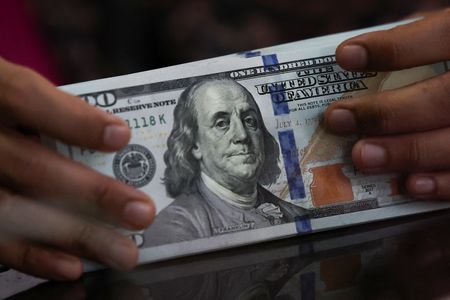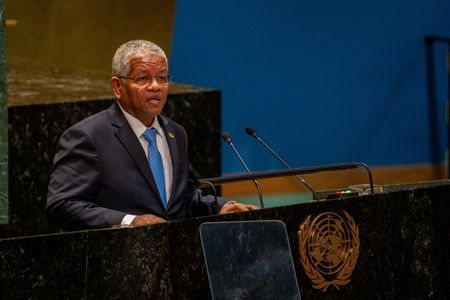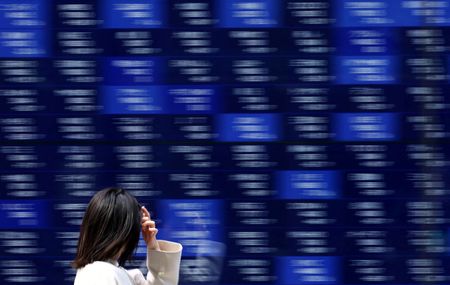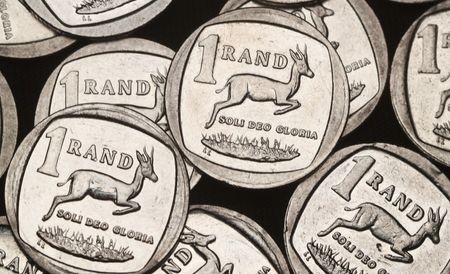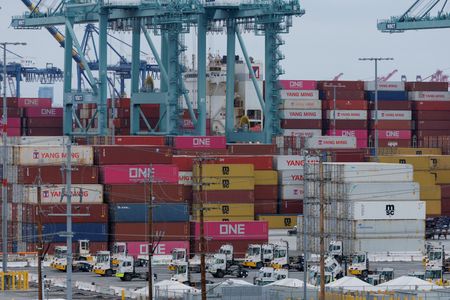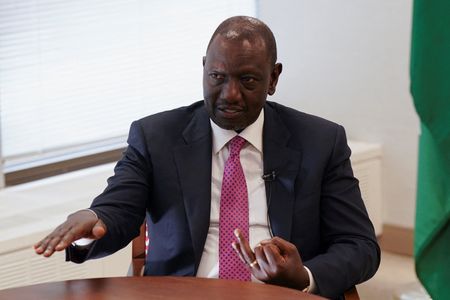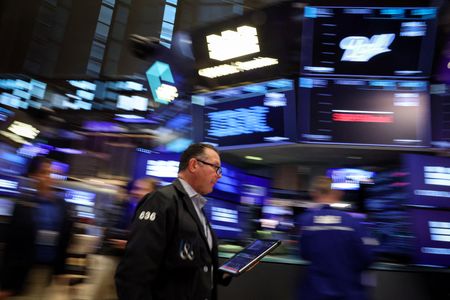By Joice Alves and Ankur Banerjee
LONDON/SINGAPORE (Reuters) -The Swiss franc was little changed against the dollar on Thursday as the Swiss National Bank kept the interest rate at zero, as expected, while the greenback was steady as traders awaited data that may outline the impact of tariffs and the outlook for rates.
The SNB held its key interest unchanged, at the lowest level among major central banks, and warned that U.S. President Donald Trump’s tariffs had dimmed the outlook for the Swiss economy going into 2026.
The dollar edged 0.1% higher against the Swiss franc at 0.7960, the euro also rose 0.1% against the franc to 0.9345.
“U.S. tariffs currently represent the biggest downside risk for Swiss economic growth in the short-term. However, a SNB rate cut into negative territory is unlikely to address this challenge,” said Maxime Botteron, economist at UBS.
“While a negative policy rate would probably reduce appreciation pressures on the Swiss franc, we do not believe that it would trigger a substantial depreciation of the franc sufficient to compensate for the tariffs,” he added.
SNB Chairman Martin Schlegel has repeatedly said there are high hurdles to reintroducing a negative interest rate, a policy used from December 2014 to September 2022.
The dollar index, measuring the U.S. currency against six peers, was flat at 97.838, hovering near a two-week high hit on Wednesday. The dollar has been slightly higher since the Fed lowered interest rates last week, as expected.
Traders have priced in 42 basis points of rate cuts in the remaining two meetings this year although comments from officials including Fed Chair Jerome Powell indicate that a lot will depend on the upcoming economic data.
The spotlight will be on U.S. economic data, including the Fed’s preferred gauge of inflation, the Personal Consumption Expenditures report on Friday and the final estimate for second quarter GDP on Thursday, while the prospect of a government shutdown looms large.
Investors are looking for clues on the impact of the sweeping tariffs unleashed by Trump.
Vasu Menon, managing director of investment strategy at OCBC Bank, said there are concerns that if U.S. growth turns out to be stronger than expected, the Fed may not cut as many times in 2026 as the futures market is suggesting currently.
“This has led to some degree of caution in the short term.
Elsewhere, the dollar edged 0.1% lower against the yen to 148.71, inching away from the three-week high it touched on Wednesday, after minutes of the Bank of Japan’s July policy meeting showed some board members called for resuming interest rate hikes.
(Reporting by Joice Alves in London and Ankur Banerjee in Singapore; additional reporting by John Revill in Zurich; editing by Alexandra Hudson)

